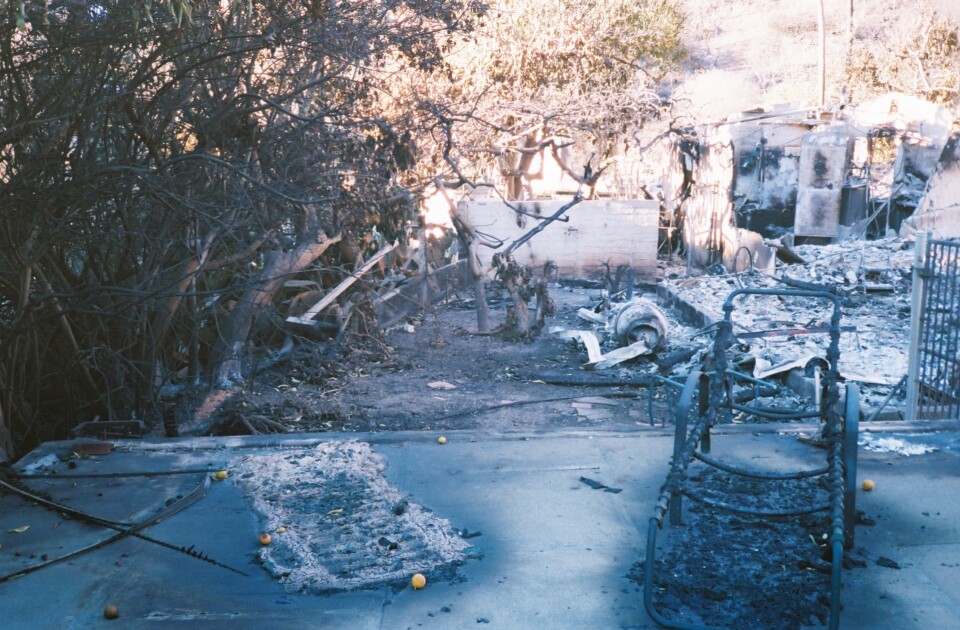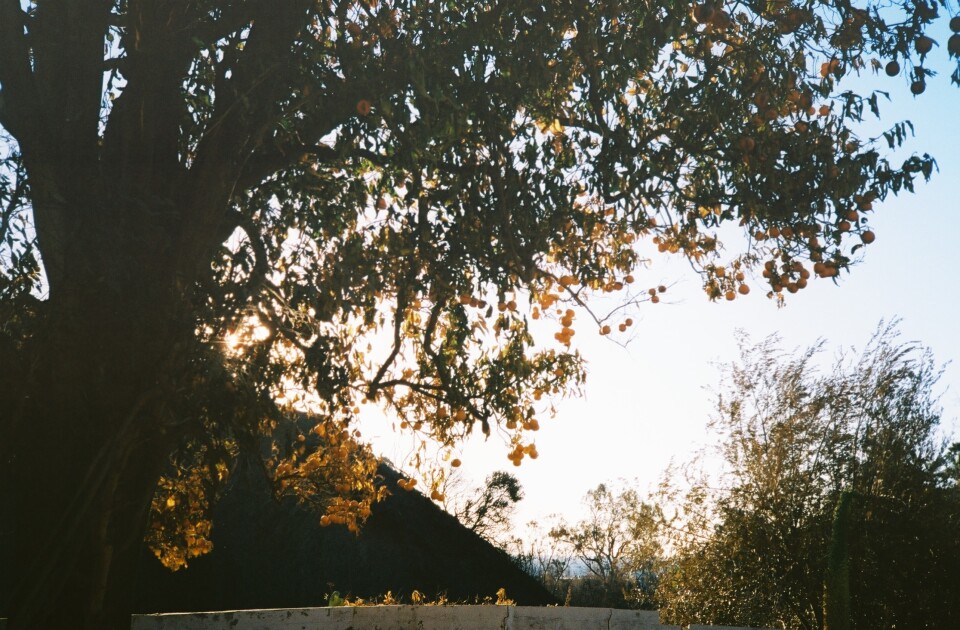Truth matters. Community matters. Your support makes both possible. LAist is one of the few places where news remains independent and free from political and corporate influence. Stand up for truth and for LAist. Make your tax-deductible donation now.
Bye-bye, bougainvillea? Fire hazard could lead to cutback of several beloved LA plants

The trumpet vines that hung off my grandma's house and over her back patio seemed inseparable from the home itself. Bouncy and lush, the tentacles of flowers seemed always to be blooming.
We'd sit under them and look out at the ocean. I photographed family members hiding between the vines.
These are the images carved into memory like a wood cut: a California house with that quintessential plant life — a couple spare palm trees and an imposing orange tree shooting into the sky.
That all changed when the Palisades Fire came in January. It barreled through the house in Malibu, leaving the carcasses of plastic lounge chairs and a few garden statues behind.

No one thing doomed that house. Up a narrow canyon off the PCH, it was only a matter of time until a fire took the land back.
But one feature may not have helped: those beloved trumpet vines. If my grandmother had grown bougainvillea, that might have been even worse.
That's because a thing we Californians love dearly also puts us in danger. In fire-prone areas, climbing plants, hanging plants — those gorgeous flowers that curl around our homes or explode from our rooftops — can be a fire hazard.
Because fire loves bougainvillea, too.
What's wrong with my climbing plants?
The L.A. County Fire Department's guide to preparing a home to survive a fire is pretty clear: To stay fire safe, vines and climbing plants on your home should go. Bougainvillea, trumpet vines, wisteria, and creeping figs all get a veto. So do junipers that are too close to a structure and palm trees that aren't maintained.
That list presents a challenge for Los Angeles, which loves its bougainvillea so much that a sign on the 101 Freeway spells out "I <3 LA" using the pink flowers as the heart. Sierra Madre's wisteria is so large they have an annual festival for it. And the palm trees? What is Los Angeles without those spindly towers?

The problem is all this iconic plant life can encourage another California classic: fire.
" That's a ladder for fires," said Dani Brusius, a volunteer with the Ventura County Master Gardener program, when asked about bougainvillea specifically. "Any plant can burn, and bougainvillea — that's a pretty fire-prone plant 'cause it's got a lot of dry stuff in it."
Brusius leads "firewise" zoom calls and answers gardening questions via phone and email. She says she's been getting more queries about fire-safe landscaping after recent fires in Southern California.
Brent Woodworth, who leads the Los Angeles Emergency Preparedness Foundation, also said that plants like bougainvillea on houses should be removed — and stat.
" The issue with the vegetation near the home is that if it produces dead leaves or needles that drop down near the base of the house that aren't cleaned out all the time," he said, "that debris burns very, very easily."
Protecting homes from wildfire
Fire experts say the landscaping choices that homeowners make are critical to fire safety. A standard recommendation is creating a "defensible space" — a buffer between a home and the surrounding area to protect it from fire.
CalFIRE calls this "the first line of defense for your home against wildfire."
State building and fire codes already require homeowners in "very high" severity zones to maintain defensible space around their homes. Those include plant maintenance and separating plants to disrupt a fire's spread.
The state soon will implement new regulations establishing a "zone zero" that will put stricter regulations on what plant life homeowners can have in the 5 feet closest to their properties.
The details aren't all hammered out yet, but it's a move that is sure to face pushback from homeowners.
Some scientists also recently argued against rules that would ban all plant life next to homes, saying that well-maintained vegetation on the home can be positive. Regular maintenance and well-irrigated plants can help protect structures from wind-blown embers and reduce flammability.
Gene Potkey, the assistant chief for CalFIRE's Defensible Space Program, said changing landscaping around homes is necessary to halting the spread of fires.
" We don't promote a barren rock moonscape environment around the house," he said. "You can have a nice landscape yard, but we can do it fire-safe."
Signs of hope
It's not all bad news for us lovers of the colorful and unwieldy plants that dot the L.A. region. Experts told LAist that new guidance doesn't mean all that tree and plant life has to go.
In the days after the Palisades Fire, I returned to Malibu to visit what remained of my grandma's home. The house was gone. The trumpet vines, too.
The orange tree was still standing, fruit and all. These many months later, it seems like it will survive.












